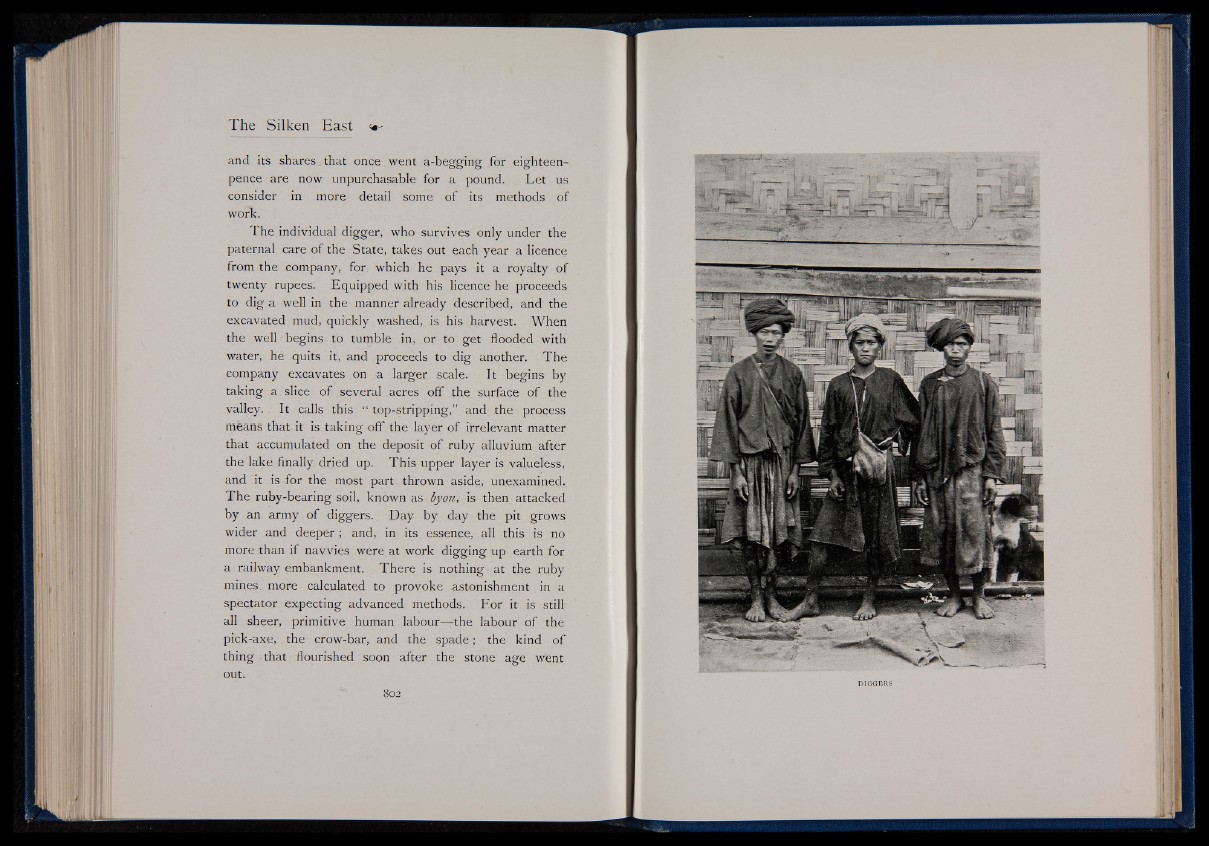
and its shares that once went a-begging for eighteen-
pence are now unpurchasable for a pound. Let us
consider in more detail some of its methods of
work.
The individual digger, who survives only under the
paternal care of the State, takes out each year a licence
from the company, for which he pays it a royalty of
twenty rupees. Equipped with his licence he proceeds
to dig a well in the manner already described, and the
excavated mud, quickly washed, is his harvest. When
the well begins, to tumble in, or to get flooded with
water, he quits it, and proceeds to dig another. The
company excavates on a larger scale. It begins by
taking a slice of several acres off the surface of the
valley. It calls this “ top-stripping,” and the process
means that it is taking off the layer of irrelevant matter
that accumulated on the deposit of ruby alluvium after
the lake finally dried up. This upper layer is valueless,
and it is for the most part thrown aside, unexamined.
The ruby-bearing soil, known as fyra, is then attacked
by an army of diggers. Day by day the pit grows
wider and deeper ; and, in its essence, all this is no
more than if navvies were at work digging up earth for
a railway embankment. There is nothing at the ruby
mines, more calculated to provoke astonishment in a
spectator expecting advanced methods. For it is still
all sheer,; primitive human labour—the labour of the
pick-axe, the crow-bar, and the spade; the kind of
thing that flourished soon after the stone age went
out.